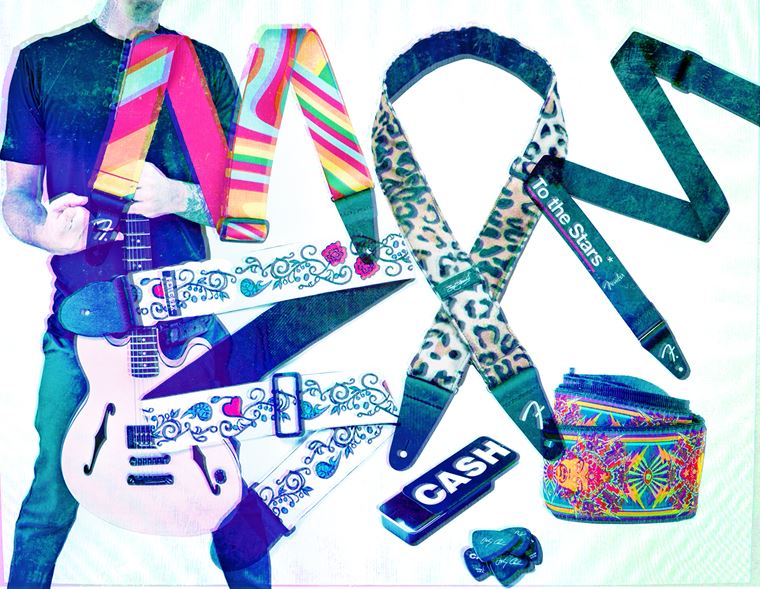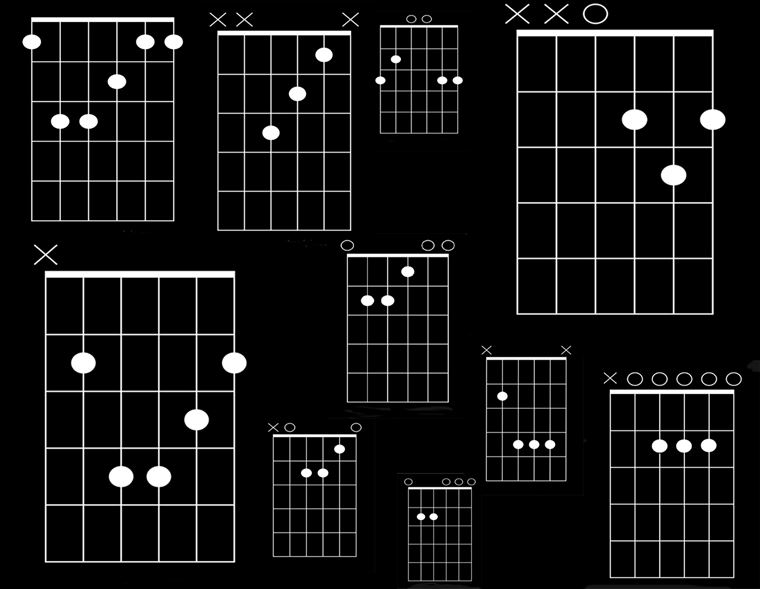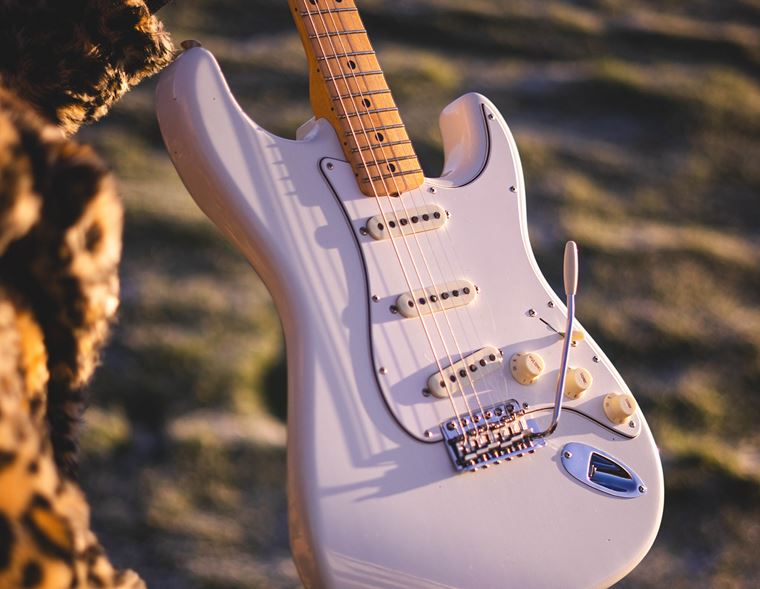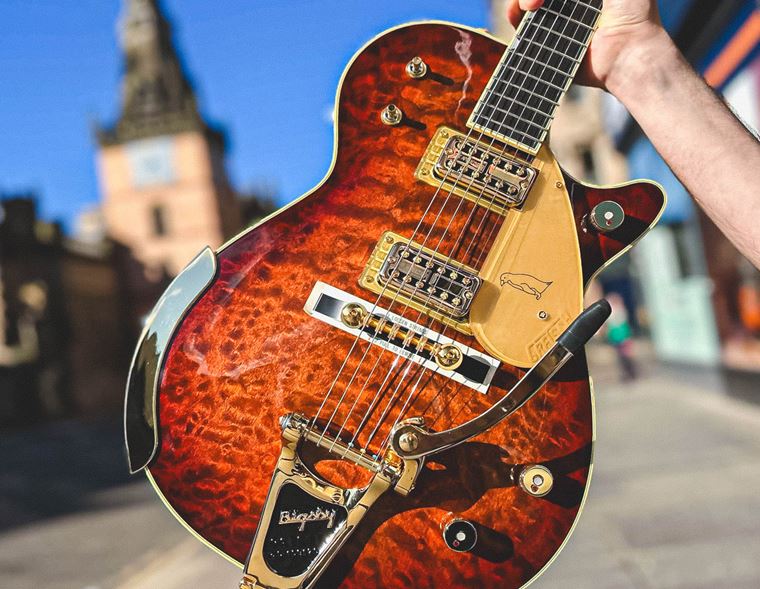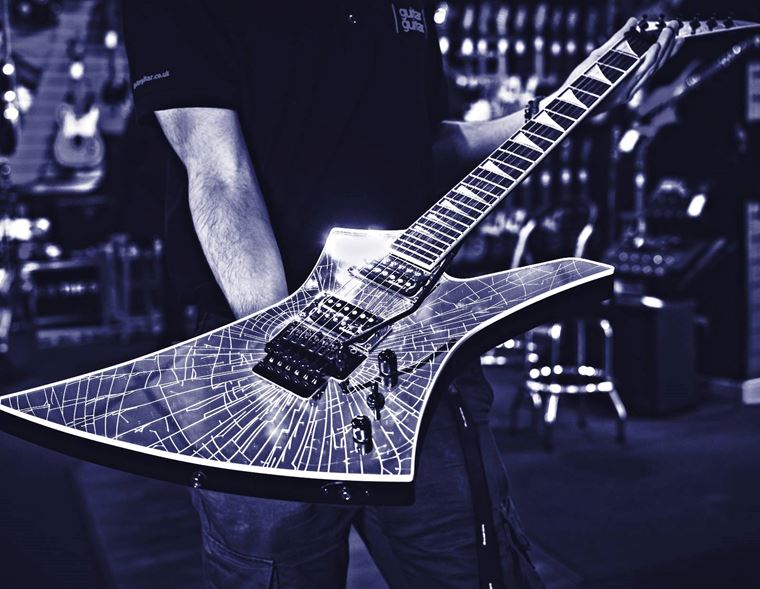Best First Guitar for Every Genre
Published on 18 November 2024
You’re ready to buy an electric guitar and you want to know what’s going to work best for you. You’ve been looking around but there is just so much choice out there! What to do?
I’ll tell you what to do: have a little glance over this blog today, because this is written for YOU!
From starting to play guitar at the age of 12, to touring in bands, selling guitars for years and now writing about them, you can safely say that I’m obsessed. Today, I’ll pass some of the fruits of my obsession on to you, so that you can confidently step into the world of guitar playing with a guitar that suits your needs.
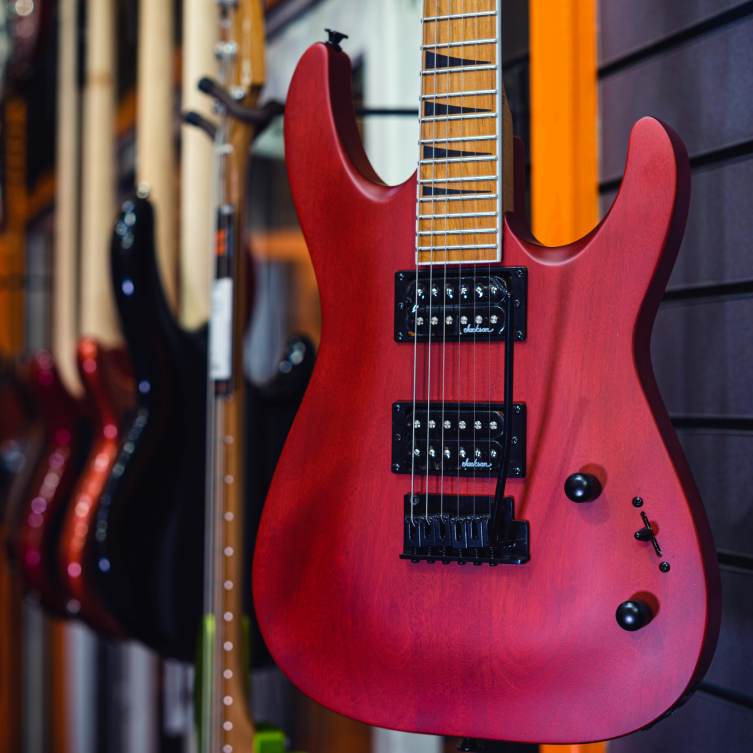
With a top budget of £300 (I’ll often come in under that price too!), I’ll go through the various genres of music that exist out there, and I’ll bring you an excellent guitar to start with. Some guitars will be suitable for lots of genres, so I’ll mention that, too, and some will be more specific. I’ll often include a few variations on a theme, to support the idea that you can get a similar thing from a few makers, which builds some element of preference into the proceedings.
Sound good? Now, before we begin, there’s just one thing…
You Can Play Anything on Anything
Let’s get one thing relatively straight from the beginning: you can play any guitar music on any guitar. You can. You might have to compromise here and there, because certain guitar designs have certain strengths and weaknesses, but there are hardly any occasions where you just flat out cannot play a particular style on any electric guitar.
Now, having said that, let’s be sensible: if you love downtuned modern metal that features 7 and 8 string guitars, then that’s something you’re really going to have to go for: a Telecaster tuned to E standard (the normal electric guitar tuning) will not give you what you want!
By the same token, if you love twangy 1950s pop, a crazy-shaped 7 string guitar is perhaps not the optimal choice for you! But these are extremes, and I believe you’ll be able to achieve pretty much anything you want to play on all of today’s choices. You’ll just prefer one over the other, and this guide will hopefully set all of that stuff straight for you!
Okay, onwards!
The Guitar Choices at a Glance
Best for Simplicity & Versatility: Squier Sonic Tele
Best First Guitar for Rock: Epiphone SG Tribute
Best First Guitar for Metal: Jackson JS22 Rhoads 7 string
Best First Guitar for Blues & Jazz: Ibanez AS53
Best First Guitar for Indie & Punk : Squier Sonic Esquire H
Best First Guitar for Shred: Ibanez GRG170DX & Jackson JS24DKAM
Today's Guitars = Unbelievable Value
Best General All-Rounder
Most people begin their electric guitar life with some form of Strat-style guitar. The original blueprint for this is the Fender Stratocaster, which is easily the most famous guitar in the world. The Strat (or S-type, if we are talking about non-Fender models) is very versatile and easy to play, with a comfortable body shape and a sound that can be adapted in many ways. You’ll see loads and loads of affordable guitars that look like the Strat for these reasons.
A popular variation is for an S-type with a humbucking pickup at the bridge. Have a look at the pictures of the guitars here in this section, and you’ll see that they all have what looks like two pickups squashed together at the bridge. You see that? That’s a humbucker, and humbuckers have a fatter, more ‘rock’ sound than the skinnier-sounding single coil pickups.
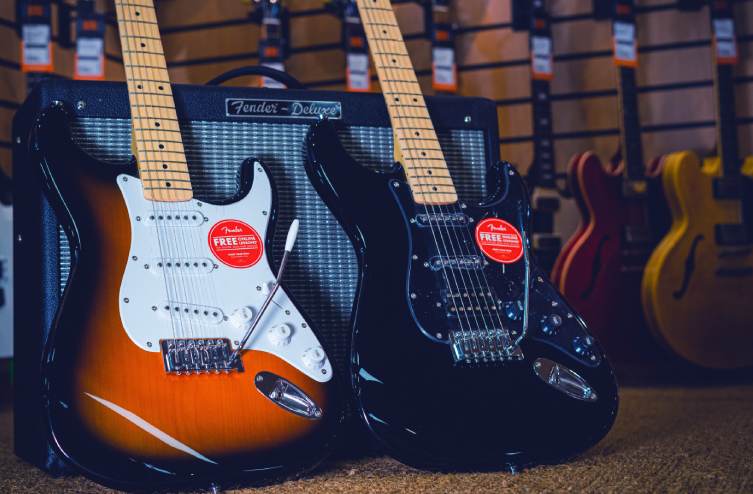
Two Squier Stratocasters here: on the left you'll see three single coil pickups (S-S-S) and on the right, a humbucker and two single coil pickups (H-S-S)
I reckon having a humbucker in there gives you more variety and fun, so each of these choices has one, in what we call an H-S-S configuration (Humbucker-single coil-single coil). You get tons of mileage and enjoy thicker sounds that similar guitars that lack the humbucker can’t offer. Here’s a few to check out:
Squier Affinity Stratocaster HSS: Squier is Fender’s official ‘replica’ company, if you like. They are a sister brand that are allowed to use the official design and shape, so this is a 'real’ Stratocaster. It has a cool look with the black hardware and translucent top, and performs really well. You can’t go wrong!

Ibanez GRG140: Ibanez are the third biggest guitar brand in the world, and their stuff is always made to a high standard. Look at the outline and you’ll see that it’s a bit sharper and more modern than the traditional looking Squier. That’s Ibanez in a nutshell: a bit more ‘rock’, so if you’re into that, this one is a very solid choice and a great looker.

Yamaha Pacifica 112J II: Yamaha’s Pacifica is always popular, with beginners and more experienced players. It’s reliable and well put together, and has its own unique take on the famous Strat design. All of these guitars will serve you well, and allow you to play pretty much anything on them.

A word to the wise: each of the above guitars is fitted with a tremolo, otherwise known as a whammy bar. It’s that metal bar/arm sticking out of the bridge. This is used to lower the pitch of notes for special effects, and they are tons of fun. The downside is that most whammy bars, regardless of cost, will sooner or later put your guitar out of tune. It’s a natural side-affect of how it works, so bear that in mind when choosing any guitar, ok? Tuning up is normal, but if you want to minimise how often you have to do that, you might want to look at something without a whammy bar. Something like this one right here…
Best for Simplicity & Versatility: Squier Sonic Tele
If you don’t want too many controls and switches - and feel that a whammy bar/tremolo arm is more hassle than you’re prepared for - then a T-style guitar is what you might want.
Based on another Fender Classic - the Telecaster - this design is also extremely versatile, with a sound that’s maybe slightly tougher than a typical S-type, unless humbuckers are involved.
Interestingly, there aren't too many T-type guitars available in this price sector, which is weird, given how straightforward the design is. Simple, yes, but enormously effective, and I don’t think I’ve ever met a guitar player who doesn't at least quite like a Tele: most love them, as do I! If I were starting out, I’d maybe go for this one, until I figured out exactly where I wanted to go with my playing, and I’d still keep this one around because it’s cool, effective and fun to bang around on. It’s the Squier Sonic Tele, and I’ve picked Torino Red but there’s a nice selection of colours for you.

Teles can be as clean and polite or as punky and antisocial as you want them to be. The sound won’t be as ‘full-on’ as something with humbuckers, but you might find that it has enough grunt for what you need in the rock stakes. If not, I reckon you might love this…
Best First Guitar for Rock: Epiphone SG Tribute
Epiphone are from the ‘other school’ of guitar making: the Gibson side of things. In reality, the great majority of electric guitars out there are based on a design by either Fender or Gibson. They are the titans of the guitar world, and the more you check out different guitars, the more you’ll notice their influence everywhere. So far, we’ve seen a bunch of guitars inspired by Fender. This is our first Gibson-style guitar, and it’s a great buy!
Epiphone are like Squier in the sense that they are owned by Gibson and make official, affordable replicas of famous Gibson guitars. This Epiphone SG Tribute, as the name suggests, gives us a very fairly priced version of the iconic Gibson SG. You know this design, don’t you? You’ve seen Angus Young and loads of other people using them. They look very rock n roll and they have a powerful sound, thanks to those two metal-covered humbuckers (underneath those covers are two coils just like the humbuckers we saw earlier).

Epiphone guitars actually have slightly shorter necks than what we’d call ‘standard’. It’s only three quarters of an inch in difference, but it does change the feel in quite a distinct way, so I think it’s important for you to try both and see what you prefer.
This Epiphone is all about classic rock, so if you’re aspiring to be a rockstar, I reckon this is where you should be looking. You’ll look in the mirror and feel like a legend, and you’ll find that it’s a very easy instrument to play too, with a loverly ‘open’ feel thanks to the devil-horn body shape allowing great access to the whole neck.
This guitar will be great for blues too, and for harder rock, so definitely give this a try!
Best First Guitar for Metal: Jackson JS22 Rhoads 7 string
Now what is this? It looks like a shark fin! Props to Jackson for making such a cool guitar at such an affordable price!
The Jackson JS22 Rhoads 7 string is, you’ll have noticed, a 7 string guitar. You get an additional low ‘B’ string here, and I’ve included this in the blog today because so much of today’s more heavy-sounding music makes use of these extended range guitars. In the past, such things were maybe a little more niche, but it’s mainstream stuff these days and I bet that loads of beginners just want to play those super-cool, ultra low notes!
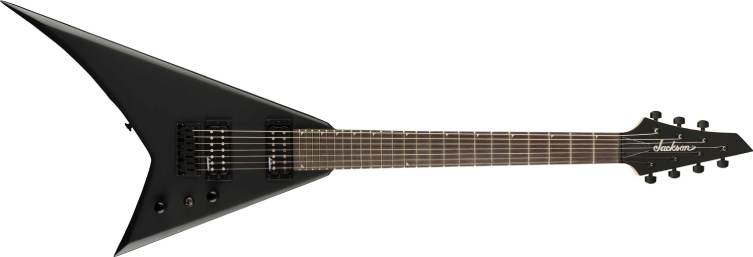
Jackson are a brand with loads of respect in the guitar world, and this JS range is very cost-effective. I wanted to show off the amazing ‘Rhoads’ shape here (it was designed by the late, great Randy Rhoads, who played with Ozzy Osbourne back in the day) because I want you to know that this sort of stuff is out there AND it’s affordable!
This guitar has a slightly longer neck because of the 7th string. Jackson do that so that the low string doesn't rattle about and sound rubbish: the extra neck length keeps the tension in the string. I don’t think it’ll cause you any sleepless nights, to be honest. The whole notion of the 7th string itself might be a lot to take onboard at the start, but as I said earlier, there are tons and tons of beginners who want to make precisely that sort of noise, so if that’s you, I’d go straight for this awesome Jackson Rhoads!
Another word to the wise: ‘shape’ guitars like this one with pointed body edges can very easily become damaged. It’s a big guitar and you’ll knock things over with it if you’re not careful. Those pointed tips are fragile! If that sounds like you, then you may want to go for the somewhat more traditional looking JS22 Dinky 7 String. It’s pretty much that exact same guitar in every way apart from the shape!

Best First Guitar for Blues & Jazz: Ibanez AS53
If you’re wanting to delve into the worlds of blues and jazz, you might be looking for a semi acoustic guitar. It’s a deceptive name, because they aren’t really ‘acoustic’ at all: they are electric guitars with hollow bits in them for an airier ‘plugged in’ sound. They will be slightly louder to strum unplugged than a standard electric guitar, but that’s not really their purpose.
At the £300 and under end of the market, there aren’t a whole lot of hollow or semi hollow body guitars available. You could adjust your budget and find a wealth of Epiphone and Gretsch models, but I don’t think you have to, because Ibanez have you covered.
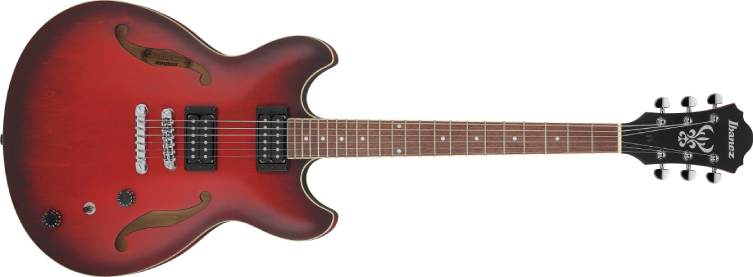
I mentioned earlier in the guide that Ibanez are famous for their quality. This extends from their top-priced instruments right down to their entry-level models, so I have no hesitations in recommending the Ibanez AS53 to you. It’s a semi-acoustic ‘thinline’ style guitar with two humbuckers and a sound that can actually have some nice bite to it, or it can be warmed up by turning the tone controls back a little. You’ll enjoy that airy, open sound that jazz players like so much, but you’ll also be able to get some blues grit, too. And Indie players on a budget will love this one as well!
Best First Guitar for Indie & Punk : Squier Sonic Esquire H
Indie and punk players actually tend to want the same thing a lot of the time: a simple, straightforward instrument that looks classic and puts out a big sound. This is all ably achieved by the Squier Sonic Esquire H. This is pretty similar to the Squier Sonic Telecaster I showed you earlier, but there’s a fairly significant difference here: this one does away with the two chimney sounding single coil pickups in favour of one meaty sounding humbucker. What this does is take away some options, but it gives back a wonderful directness and simplicity that I actually find quite inspiring to use. Plug it in, turn up the amp and get going!

Back at the beginning, I mentioned that many of these guitars will be suitable for a number of genres. This is a good example of this: the Esquire will make a great rock, blues and even metal guitar, depending on your preference. By the same token, if you like this guitar, I’d definitely recommend you A/B it with the Sonic Telecaster from earlier on, and you’ll get an instant understanding of whether you like the humbucker sound or the single coil sound. Go with what sounds better to you, and if you happen to like both, then check out some of those H-S-S Strat-types from the ‘all-rounder’ section!
Best First Guitar for Shred: Ibanez GRG170DX & Jackson JS24DKAM
It doesn’t matter that you’re just starting out, or that you are not long into your journey as a guitarist: if you want to be a shredder, you NEED to be a shredder! Shred guitar is a worthy discipline, and it takes a lot of dedication and practice to be able to play technically demanding parts.
Because of the performance nature of shred guitar, you will benefit by choosing a guitar that’s designed specifically for such playing. These types of guitar can quickly become expensive, but thankfully, Ibanez and Jackson have you covered once again.
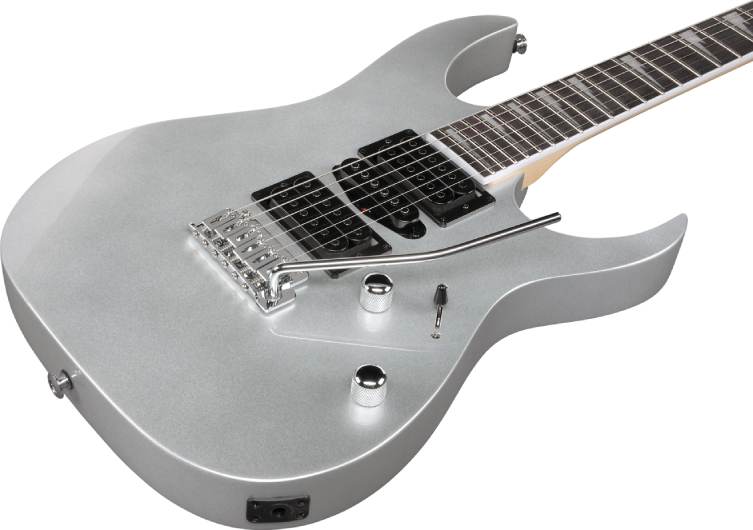
The Ibanez RGR140 that we looked at earlier is actually perfect for shredding, but let me dial it in further and suggest the GRG170DX, shown here in a pretty awesome Silver finish! This is based on the famous Ibanez RG, one of the shred world’s favourite guitars. It has powerful pickups (two humbuckers and one single coil, making this an H-S-H configuration), a flatter fingerboard (flatter equals faster once you get to that stage in your playing) and there are 24 frets here, something that not all guitars have! There are some nice details too: binding along the fingerboard edge looks classy, and sharktooth inlays add that cool 80s look.

I also mentioned Jackson, whom we’ve been introduced to already in this blog. I’ve gone for the JS24 DKAM Dinky. This is a very cool looking guitar, with the pointed Jackson headstock straight from the 80s (the golden age of shred, of course), sharkfin inlays (each brand uses its own trademarked take on this) and a carved ‘arched’ body that looks a whole lot more expensive that the number on the price tag.
This Jackson also has a roasted maple neck, which sounds a bit odd but in reality means that the timber has been heat-treated to improve its strength and durability. This is true, by the way, not guitar-land snake oil: the process is called ‘torrefaction’ and it used to be a pretty expensive addition to a guitar’s cost, so having such a thing here is very impressive!

I actually can’t decide which guitar is the better for aspiring shred gods, so please take my usual advice and try both!
Today's Guitars = Unbelievable Value
It’s absolutely incredible what you can get for under £300 today in the electric guitar world. The market is so competitive here that the big brands are all striving to offer more in order to get you to pick them. That means, to you and I, that we get some pretty exceptional guitars to choose from, all of which look, sound and play far ‘better’ than their price might indicate.
I purposefully choose £300 as a cut-off mark, because going a little further up in price completely explodes the market and can become a little overwhelming. On this list we do not have PRS SE, Sterling, Schecter or Gretsch, because their entry level offerings are all a little more than our limit. To me, that only focuses on the original point that there’s a veritable Aladdin’s cave of goodies to be had without increasing your spend.
Each guitar on this list today is one I’d be happy to take home and play. If there’s a slight ‘rock’ edge to the choices on offer, that’s more indicative of the market than anything else: most fledgling guitarists want to play rock music in some form or another, so most guitars are either edging that way or are more direct replicas of classics.
I hope this guide has provided some context for you, and helped you to see the wood from the trees a little. I’ll tell you one piece of advice, though: make sure you try a few of the models on here that you wouldn’t normally go for. Why? Well, you may like a more traditional looking guitar but find that the neck on, say, the Jackson Dinky is the best thing you’ve ever experienced. You may be dead set on a heavy metal guitar but, upon trying one, find out that you actually love Telecasters. Go in with a plan, by all means, but do be open to trying other things. I think that’s the best mindset to have when searching for your first electric guitar.
Above all, enjoy the process and don’t be shy in asking for help! Good luck!
Click to Browse All Electric Guitars Under £300




